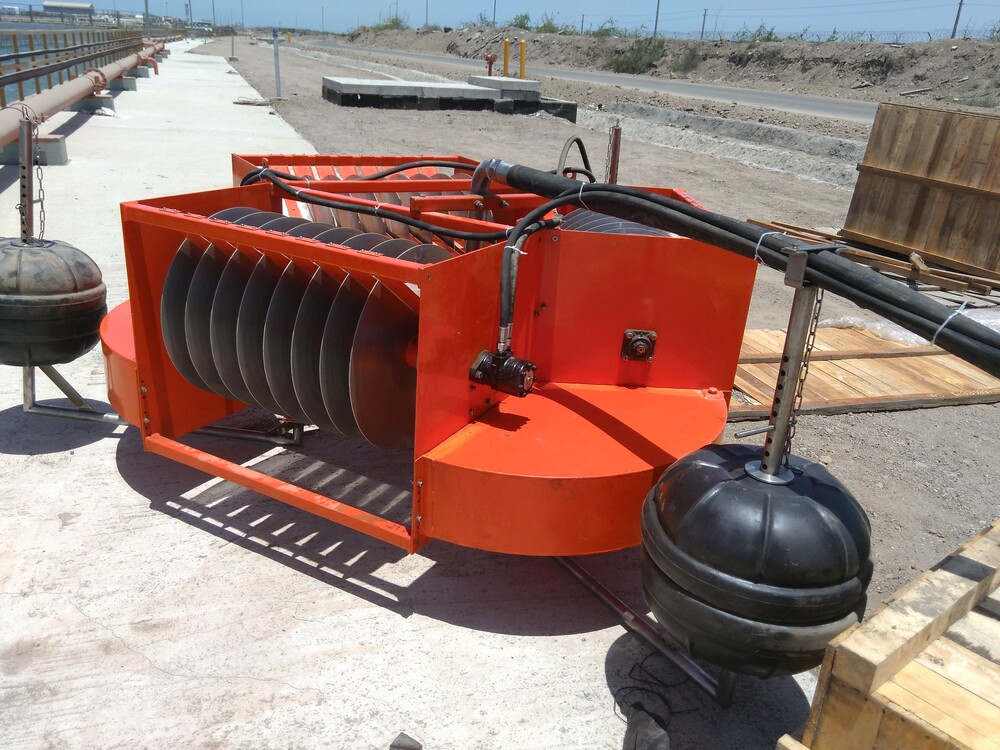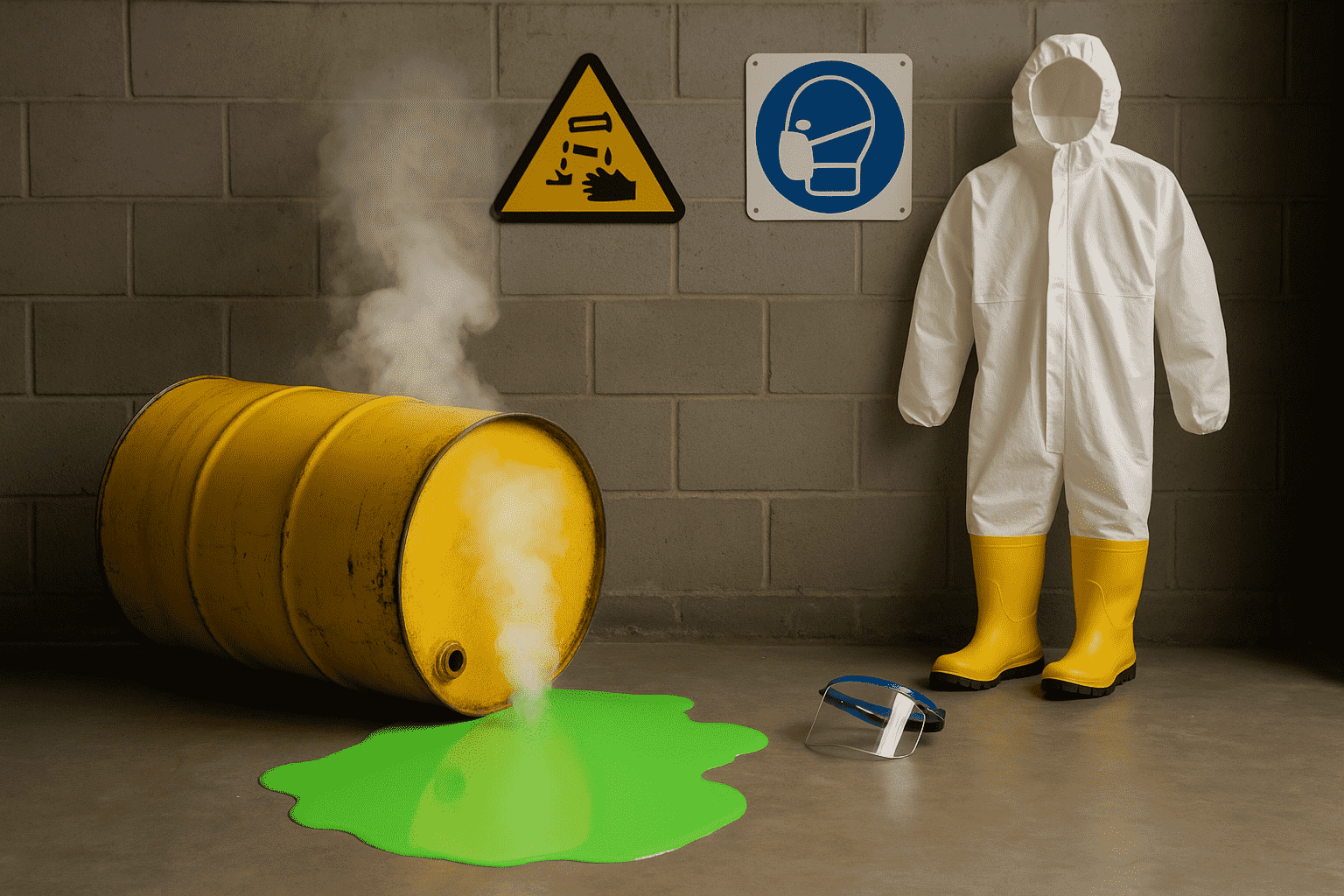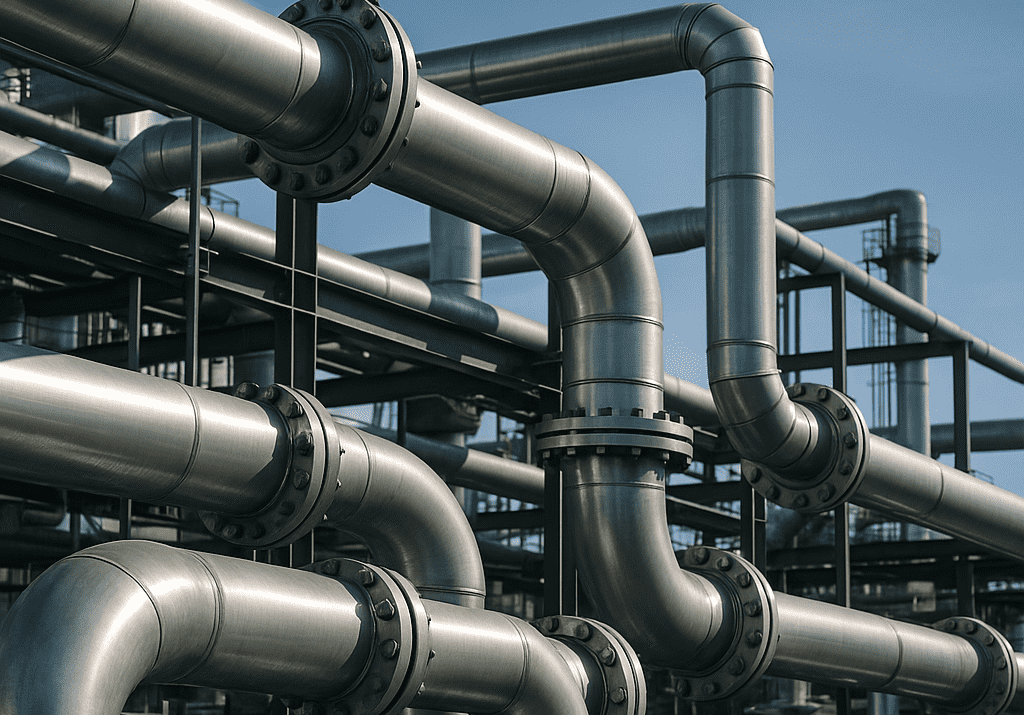Guide to Key Factors Affecting Disc Skimmer Performance

Oil skimmers are widely used in industries, environmental cleanup operations, and wastewater treatment facilities to remove oil spills, grease, and other hydrocarbons. There are several types of oil skimmers designed to suit specific conditions and requirements for oil recovery. A disc skimmer is one of the versatile oil skimmers that perform efficiently under varying water conditions.
A Disc skimmer is an oleophilic rotary oil skimmer. It employs rotating discs to skim oil from the surface of the water. The oil is then scraped off the disc and collected for disposal or recycling. The disc skimmer can be fixed or floating.
Working
The disc skimmer may have one or more circular discs, depending on its capacity. The rotating discs are partially submerged in the water. As the disc rotates, oil adheres to its surface due to surface tension, while water slides off. A scraper or wiper blade removes the oil from the disc as it rotates out of the water, directing the recovered oil into a collection tank. The disc rotates continuously, efficiently removing oil from contaminated water.
Performance
Several factors contribute to the performance of a disc skimmer. Temperature, water environment, and flow rates are some of the key factors that play a significant role in the performance of a disc skimmer.
Temperature
Temperature primarily impacts the physical properties of oil and water. Let’s find out how temperature affects the performance of a disc skimmer.
Oil Viscosity
Warm temperatures reduce the viscosity of oils making them more fluid. The oil spreads across the water surface and forms a thin layer, improving adhesion to the rotating discs. In warmer conditions, oil is easier to skim off and collect, enhancing recovery efficiency.
Whereas, the cold temperatures increase oil viscosity, causing it to thicken. Thicker, more viscous oils adhere more readily to the skimming disc but are harder to scrape off efficiently. In extreme cold conditions, oil may form semi-solid layers, reducing the effectiveness of the skimmer.
Surface Tension and Adhesion
Temperature affects the surface tension between oil and water. Warm temperatures reduce surface tension, facilitating oil adhesion to the disc. Colder temperatures increase the surface tension and can make it harder for the oil to stick to the disc.
Freezing Risk
In low-temperature conditions water may freeze on the disc, hindering rotation and scraping mechanisms. Oils with high pour points may also solidify, making skimming nearly impossible unless heating systems are implemented.
The disc skimmers typically perform best when the water and oil are within a moderate temperature range. High temperatures, i.e. within equipment tolerances usually increase efficiency, while very low temperatures require additional measures such as heating or insulation.
Temperature impacts the viscosity, adhesion, and operational efficiency of the disc skimmers. Warmer temperatures generally enhance performance, while colder temperatures may require additional measures to maintain functionality.
Saline and Fresh Water Environments
Disc skimmer is a versatile oil skimmer but, it faces challenges in different water environments which are:
Saline Water Environment
- • Corrosion and Material Degradation: Saline water accelerates the corrosion of metallic components. Protective coatings or stainless-steel construction are often required to resist saltwater corrosion.
- • Wave and Current Effects: Open Ocean or coastal areas often experience waves, currents, and tides, which can disrupt the skimming process. Oil may spread unevenly, making recovery less efficient.
- • Debris Interference: Marine environments often contain debris like seaweed, plastics, and floating trash that can clog or jam the skimmer’s rotating disc and scrapers.
- • Marine Fouling: Marine organisms such as algae, biofilms, etc. can attach to the skimmer surfaces, reducing the disc’s effectiveness and increasing maintenance requirements.
- • Oil Spreading: In saline water, oil may spread more rapidly over larger areas due to differences in surface tension compared to freshwater, reducing the efficiency of localized disc skimming.
Freshwater Environments
- • Variable Water Quality: Freshwater environments may have high levels of organic matter, sediments, and pollutants, which can interfere with the skimmer’s operation. Thick sludge or algae can clog the disc skimming system, reducing efficiency.
- • Shallow and Confined Areas: Many freshwater sites, such as ponds, rivers, or industrial basins, are shallow or confined, limiting the mobility and deployment of larger disc skimmers. The fixed disc skimmer also underperforms compared to other skimmers as the disc is partially submerged in contaminated water. This limits the skimming efficiency due to the limited coverage area of the disc.
- • Obstacles like rocks, submerged vegetation, or floating logs may obstruct operations.
- • Temperature Extremes: Freshwater bodies often experience greater temperature variation, including freezing conditions in winter. Ice can hinder operation, requiring additional heating or thawing measures. High temperatures in summer can encourage microbial growth, leading to biofilm formation on disc skimmer components.
- • Variable Oil Properties: Freshwater spills often involve a variety of oil types, from light petroleum to heavy industrial oils, each requiring different recovery strategies. Heavier oils may be more challenging to recover effectively in still freshwater environments.
Disc skimmers face unique challenges in saline and freshwater environments. Appropriate material selection, regular maintenance, and adapting skimming strategies to specific conditions can significantly enhance their efficiency and reliability in both settings.
Flow Rate
We have learned about the temperature and different water environments that affect the performance of a disc skimmer. Next, find out how water flow rates affect the performance of disc skimmers.
Water flow rates significantly influence the performance of disc skimmers by affecting oil adhesion, recovery efficiency, and the stability of the skimming process.
Oil Layer Stability
- • Low Flow Rates: When water is relatively still or has a low flow rate, the oil layer remains stable on the surface. This allows the skimmer’s discs to effectively attract and recover the oil without interference. Ideal for achieving high recovery efficiency, especially in calm environments like ponds or containment areas.
- • High Flow Rates: High flow rates or turbulence can disrupt the oil layer, mixing oil into the water column or dispersing it away from the skimmer. This reduces the amount of oil available for recovery and increases the difficulty of operation.
Oil-Water Separation
- • Low Flow Rates: Oil has more time to float to the surface, enhancing separation. This results in a thicker and more concentrated oil layer, which is easier for the disc to recover.
- • High Flow Rates: Rapid water movement can cause oil to form thin layers or emulsify with water, decreasing the skimmer’s ability to attract and recover oil.
Skimmer Positioning and Stability
- • Low Flow Rates: Skimmers can be positioned with precision, as the calm water minimizes drift or misalignment. This ensures the skimmer remains in the optimal location for oil recovery.
- • High Flow Rates: Strong currents or high flow rates may move the skimmer away from the oil spill area, reducing efficiency. Additional measures, such as anchoring or using containment booms, may be required to stabilize the skimmer.
Oil Recovery Efficiency
- • Low Flow Rates: At low flow rates, oil adheres more effectively to the skimming disc, maximizing recovery.
- • High Flow Rates: The hydrodynamic forces created by fast-moving water can shear oil off the disc before it reaches the scraper. This reduces the efficiency of the oil recovery process.
Debris and Contaminants
- • Low Flow Rates: Debris tends to settle or remain localized, making it easier to manage and less likely to interfere with skimmer operation.
- • High Flow Rates: Fast water flow can carry debris into the skimmer, causing clogs, increasing wear on the equipment, and requiring more frequent maintenance.
Disc Rotational Speed Adjustment
Disc skimmers often need adjustments in disc rotational speed based on water flow rates:
- • Low Flow Rates: Slower disc speeds are sufficient to recover oil effectively without unnecessary energy use.
- • High Flow Rates: Faster disc speeds may be required to maintain oil adhesion in turbulent conditions, but this can also increase wear and energy consumption.
We can conclude that disc skimmers are efficient, cost-effective, and environmentally friendly oil skimmers. They are adaptable to both saline and freshwater environments with operational adjustments. Disc skimmers are ideal for oil spill cleanup, industrial wastewater treatment, and marine operations.
Frequently Asked Questions
Q1 What environmental benefits do oil skimmers provide?
A. Oil skimmers help protect the environment by removing oil from water surfaces, reducing water pollution, and preventing harm to marine life.
Q2 How does the design of rotary skimmers ensure optimal performance in various water conditions?
A. Rotary skimmers are designed with rotating disks, drums, or belts that effectively separate oil from water under diverse conditions. Their adaptability comes from their ability to handle varying water flow rates, oil viscosities, and environmental conditions.





